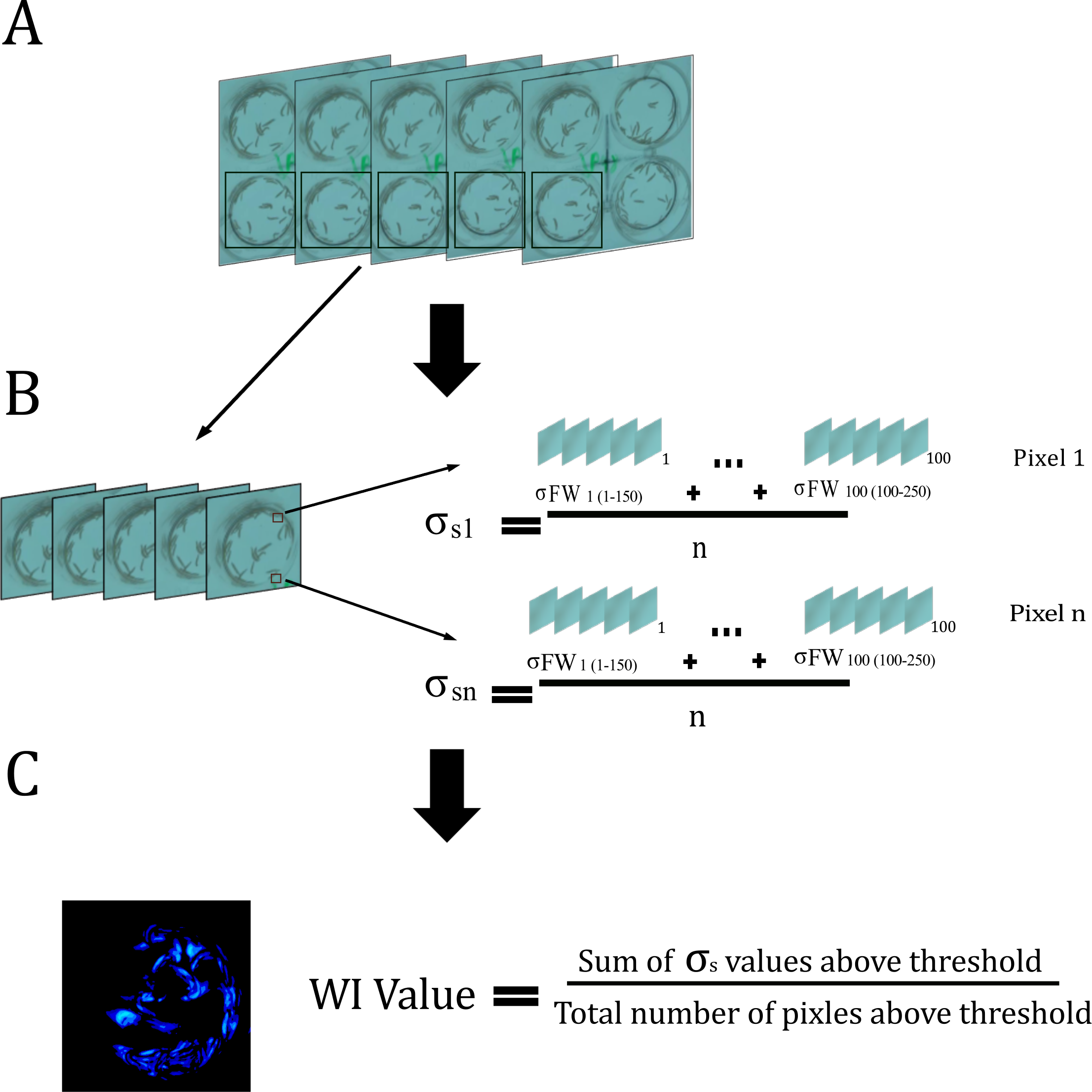The Wiggle Index: An Open Source Bioassay to Assess Sub-Lethal Insecticide Response in Drosophila melanogaster
Toxicological assays measuring mortality are routinely used to describe insecticide response, but sub-lethal exposures to insecticides can select for resistance and yield additional biological information describing the ways in which an insecticide impacts the insect. Here we present the Wiggle Index (WI), a high-throughput method to quantify insecticide response by measuring the reduction in motility during sub-lethal exposures in larvae of the vinegar fly Drosophila melanogaster. A susceptible wild type strain was exposed to the insecticides chlorantraniliprole, imidacloprid, spinosad, and ivermectin. Each insecticide reduced larval motility, but response times and profiles differed among insecticides. Two sets of target site mutants previously identified in mortality studies on the basis of imidacloprid or spinosad resistance phenotypes were tested. In each case the resistant mutant responded significantly less than the control. The WI was also able to detect a spinosad response in the absence of the primary spinosad target site. This response was not detected in mortality assays suggesting that spinosad, like many other insecticides, may have secondary targets affecting behaviour. The ability of the WI to detect changes in insecticide metabolism was confirmed by overexpressing the imidacloprid metabolizing Cyp6g1 gene in digestive tissues or the central nervous system. The data presented here validate the WI as an inexpensive, generic, sub-lethal assay that can complement information gained from mortality assays, extending our understanding of the genetic basis of insecticide response in D. melanogaster.


